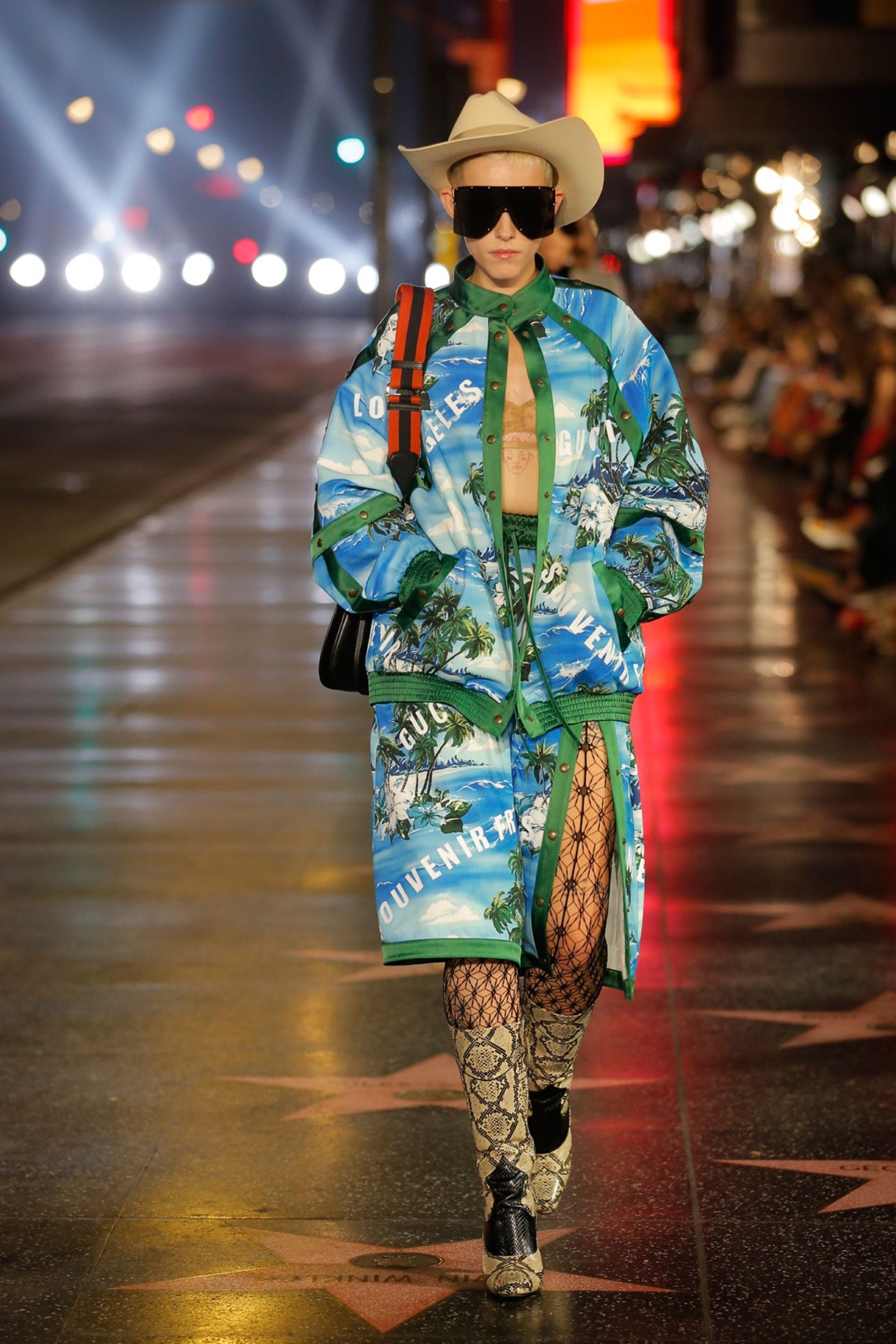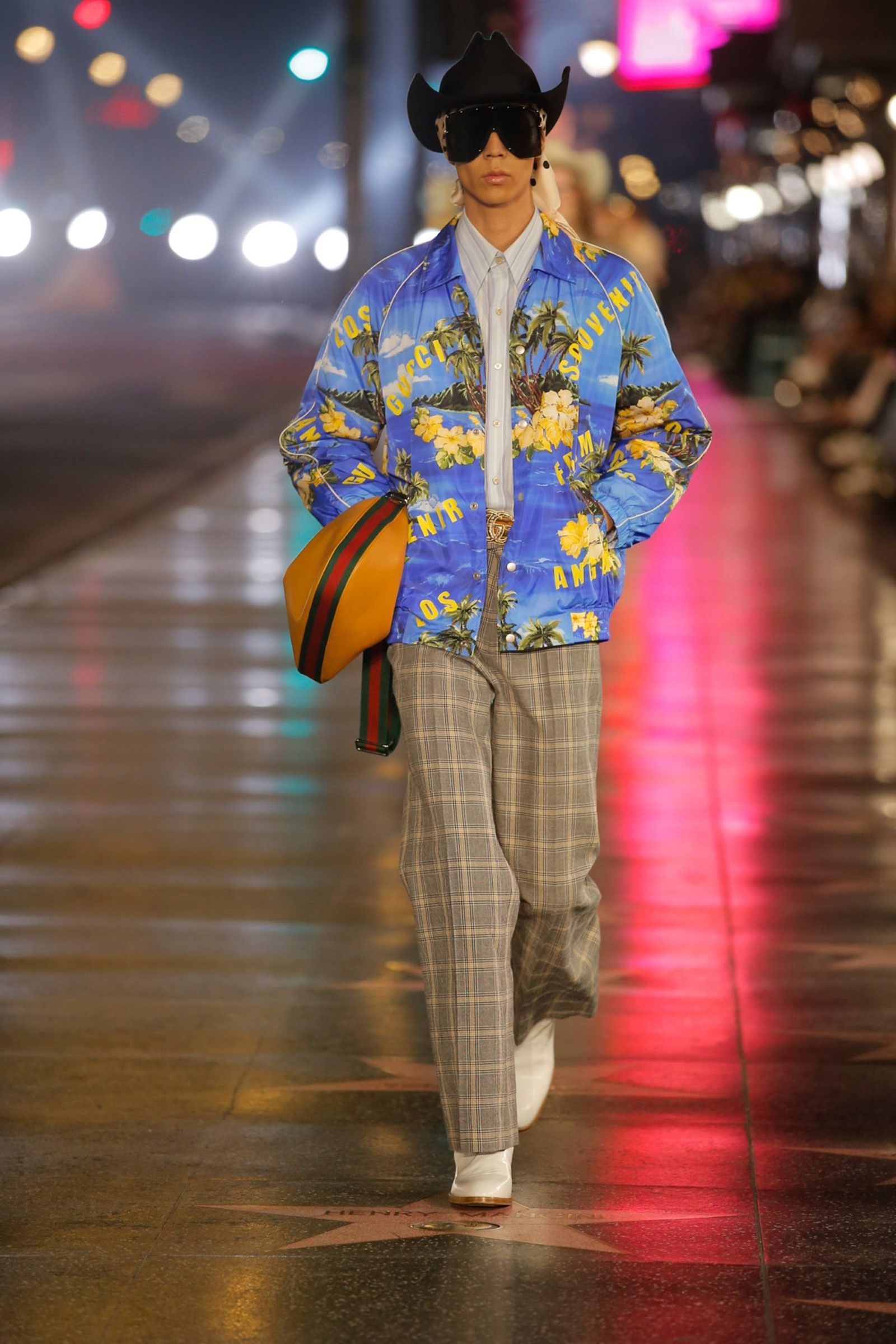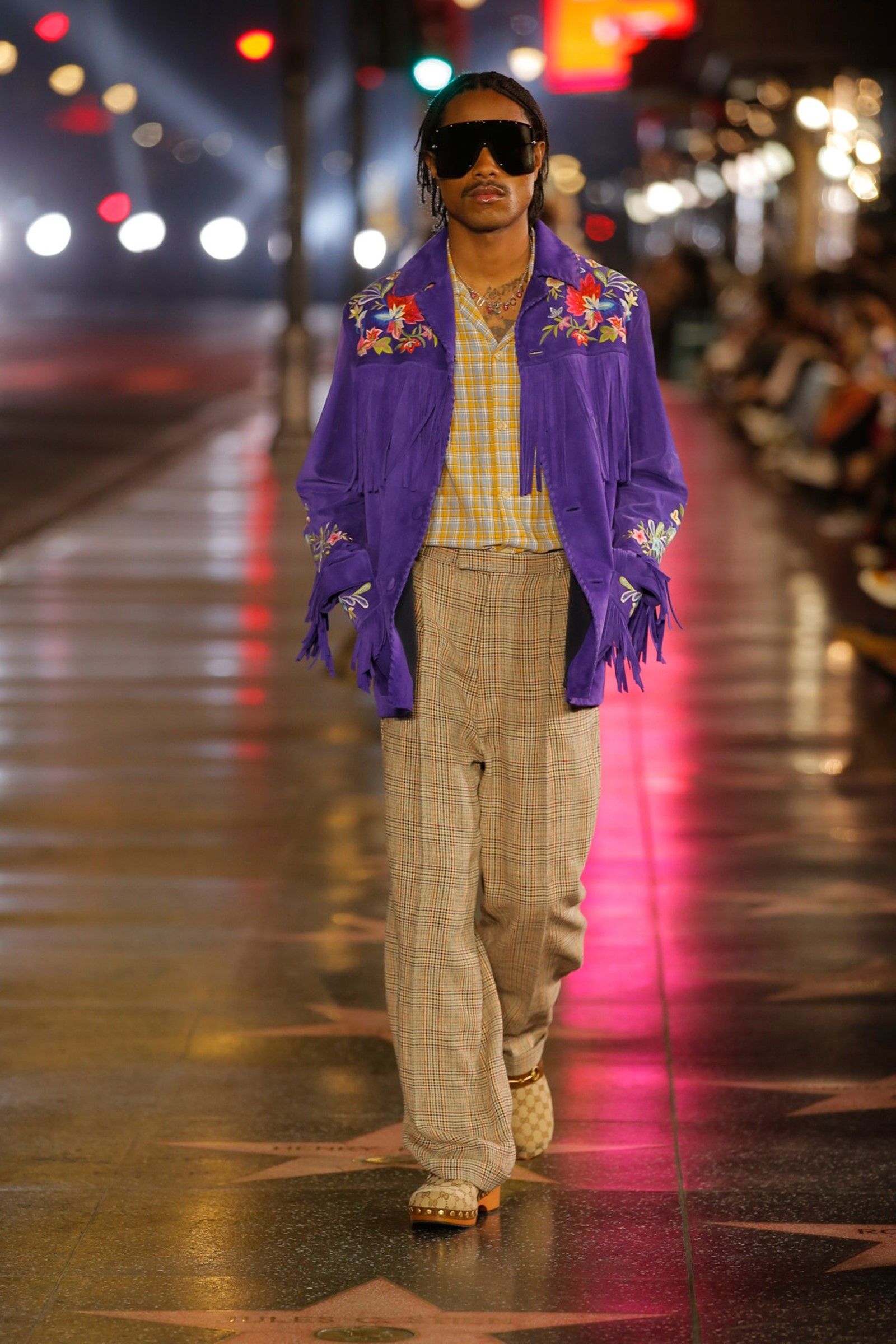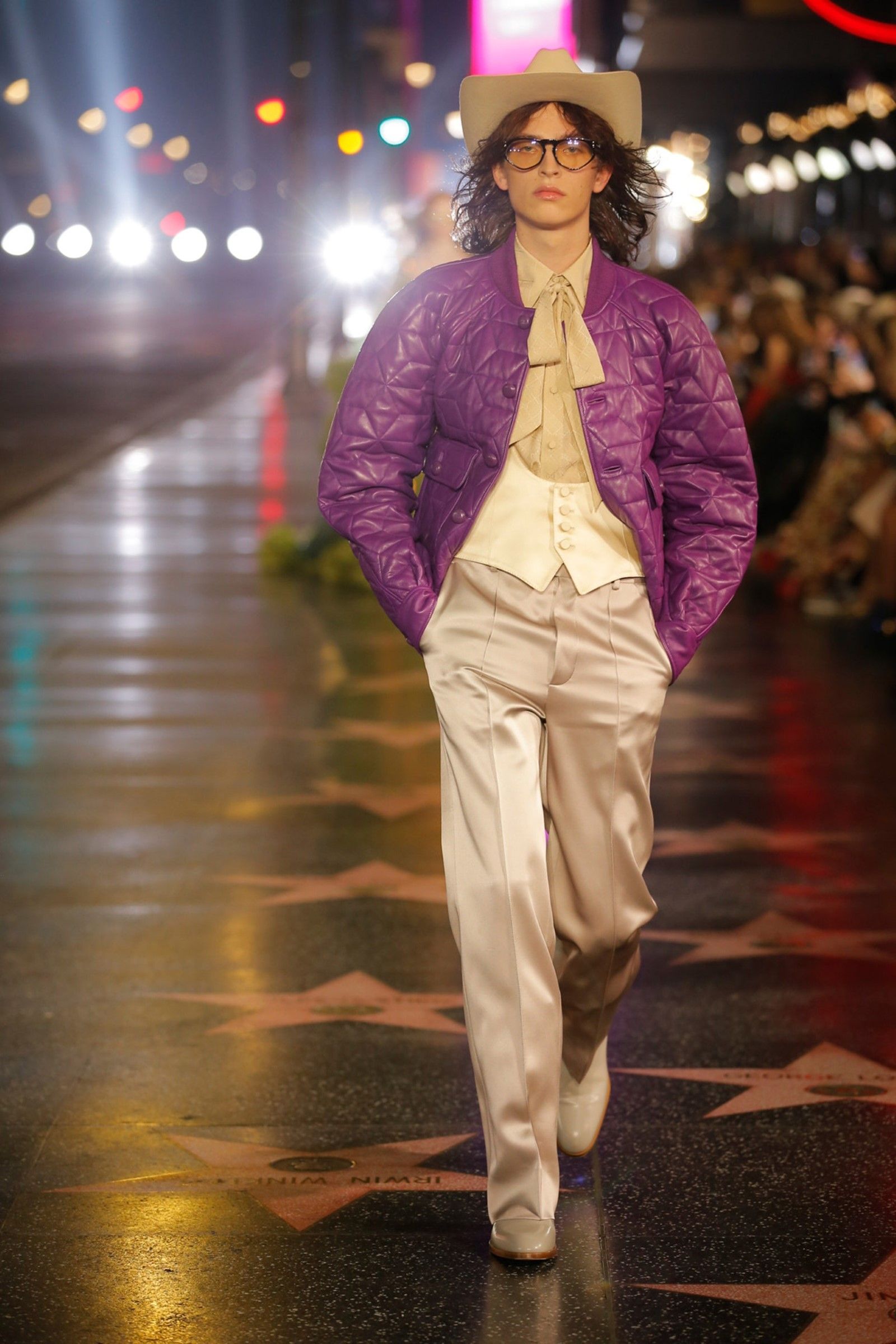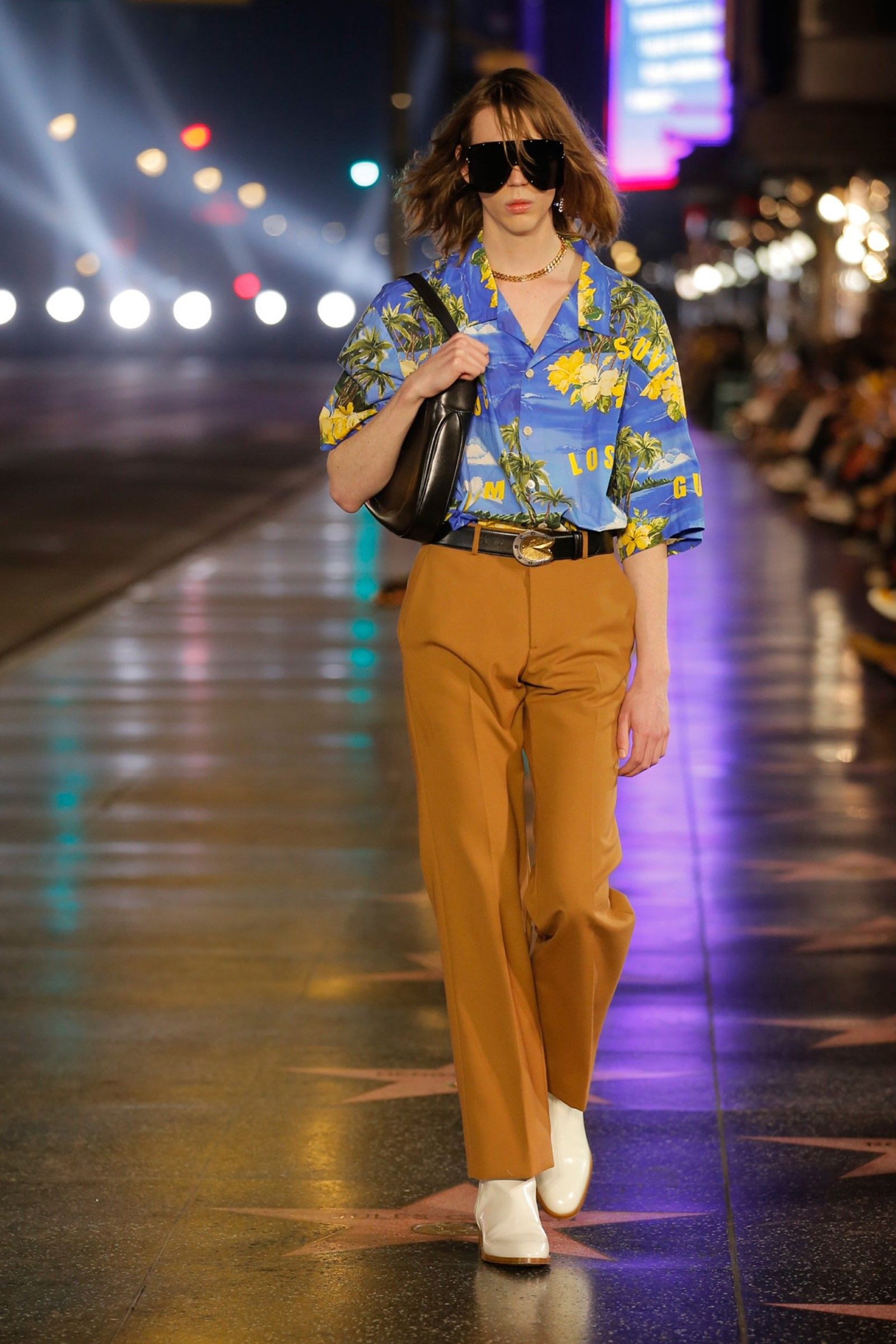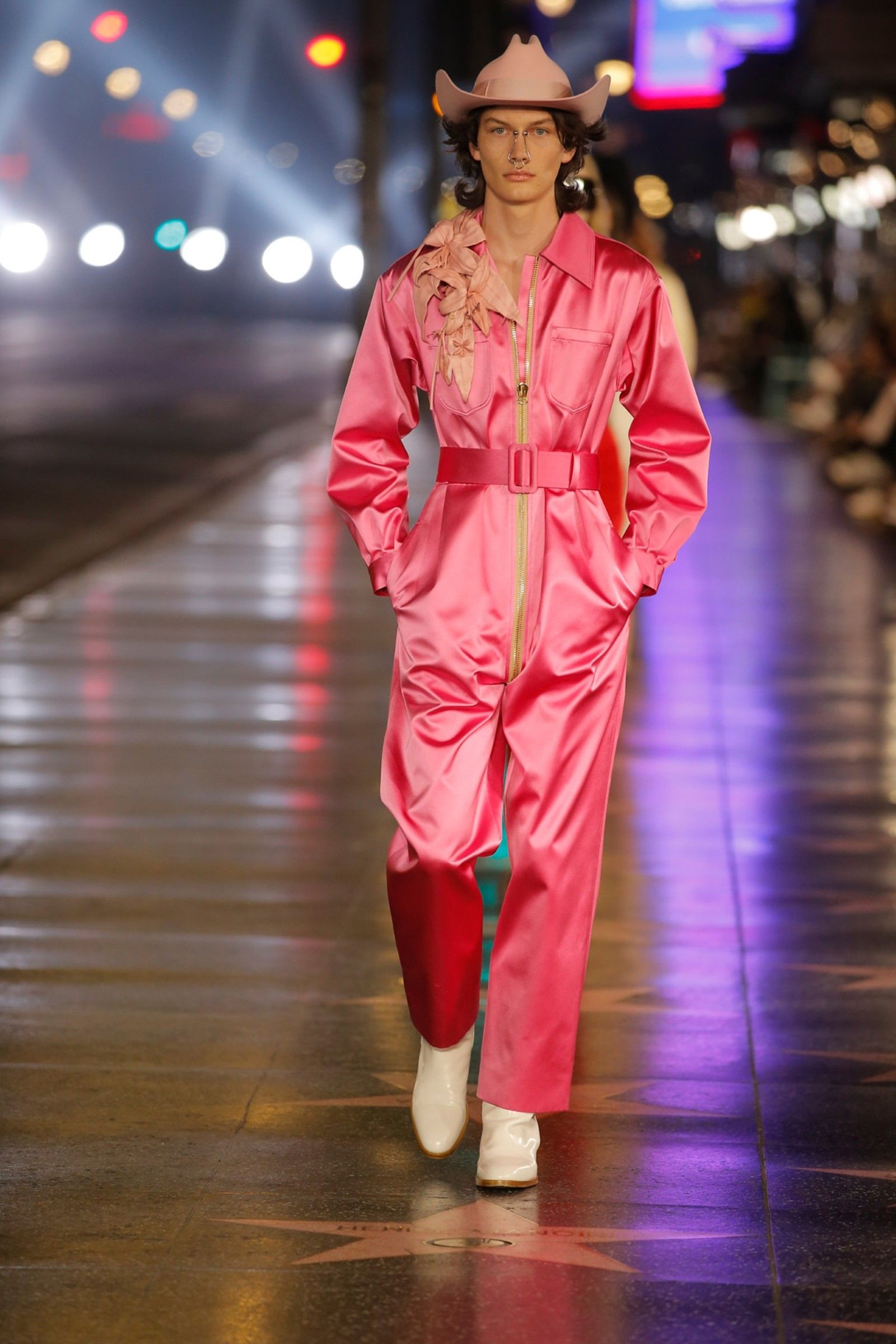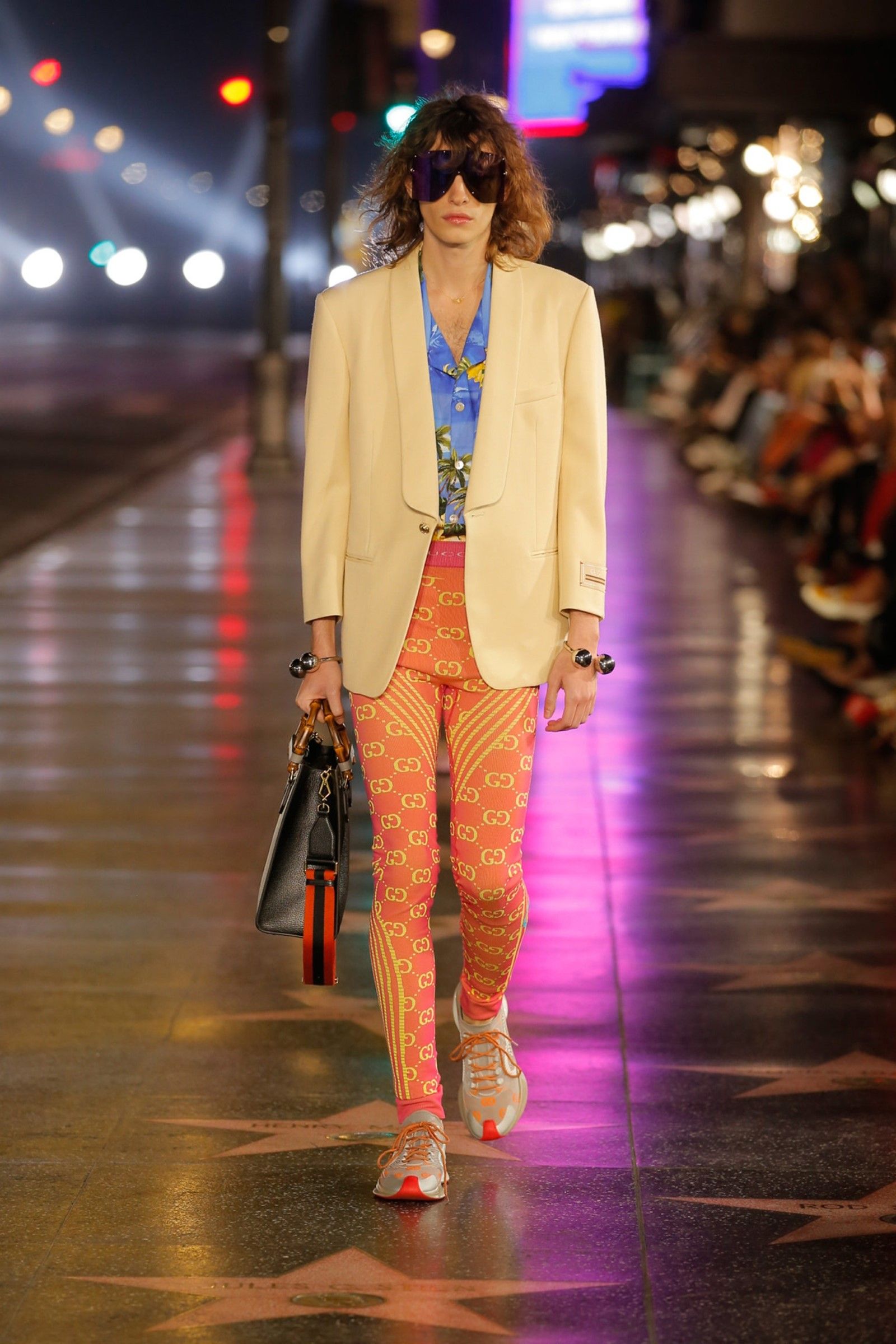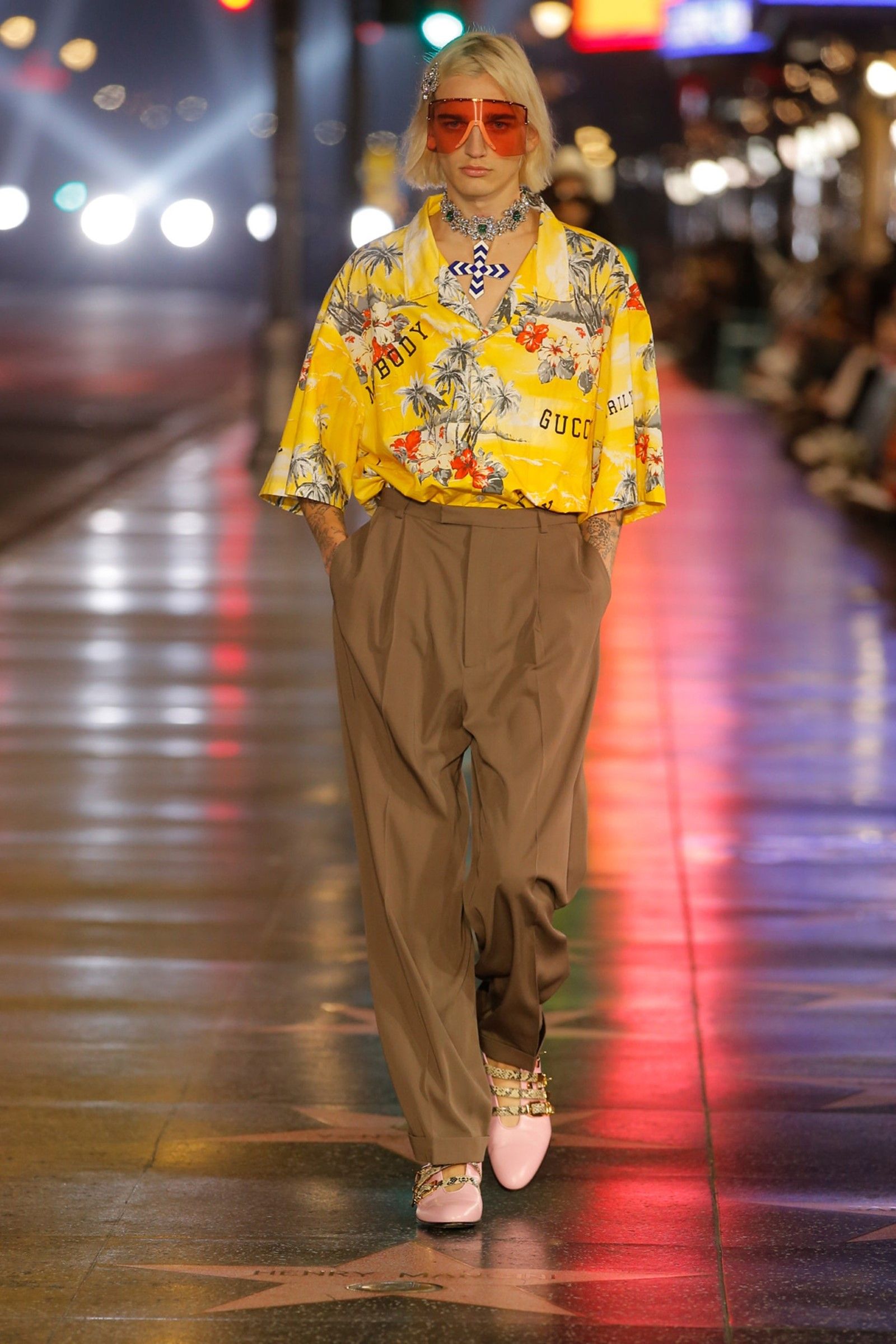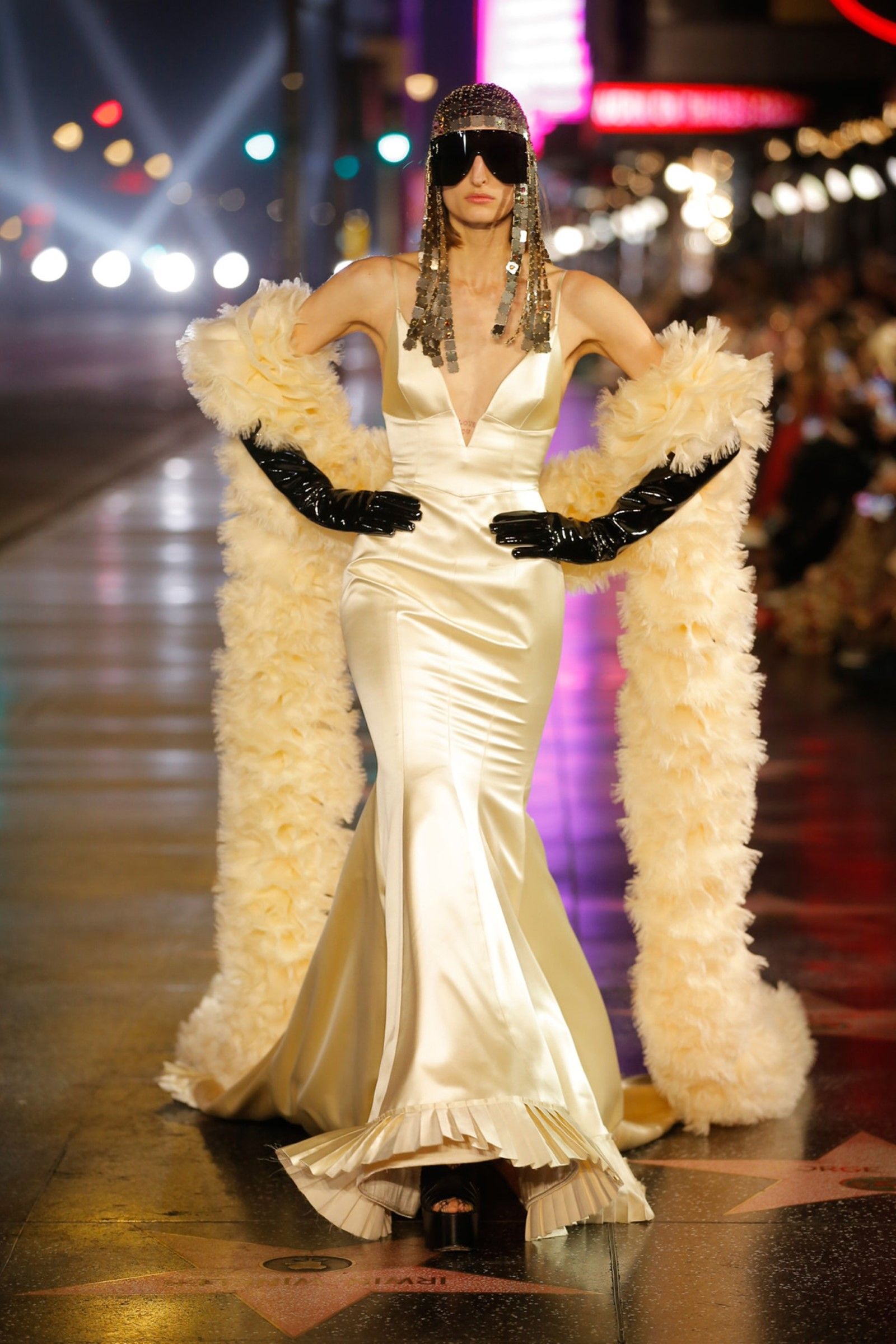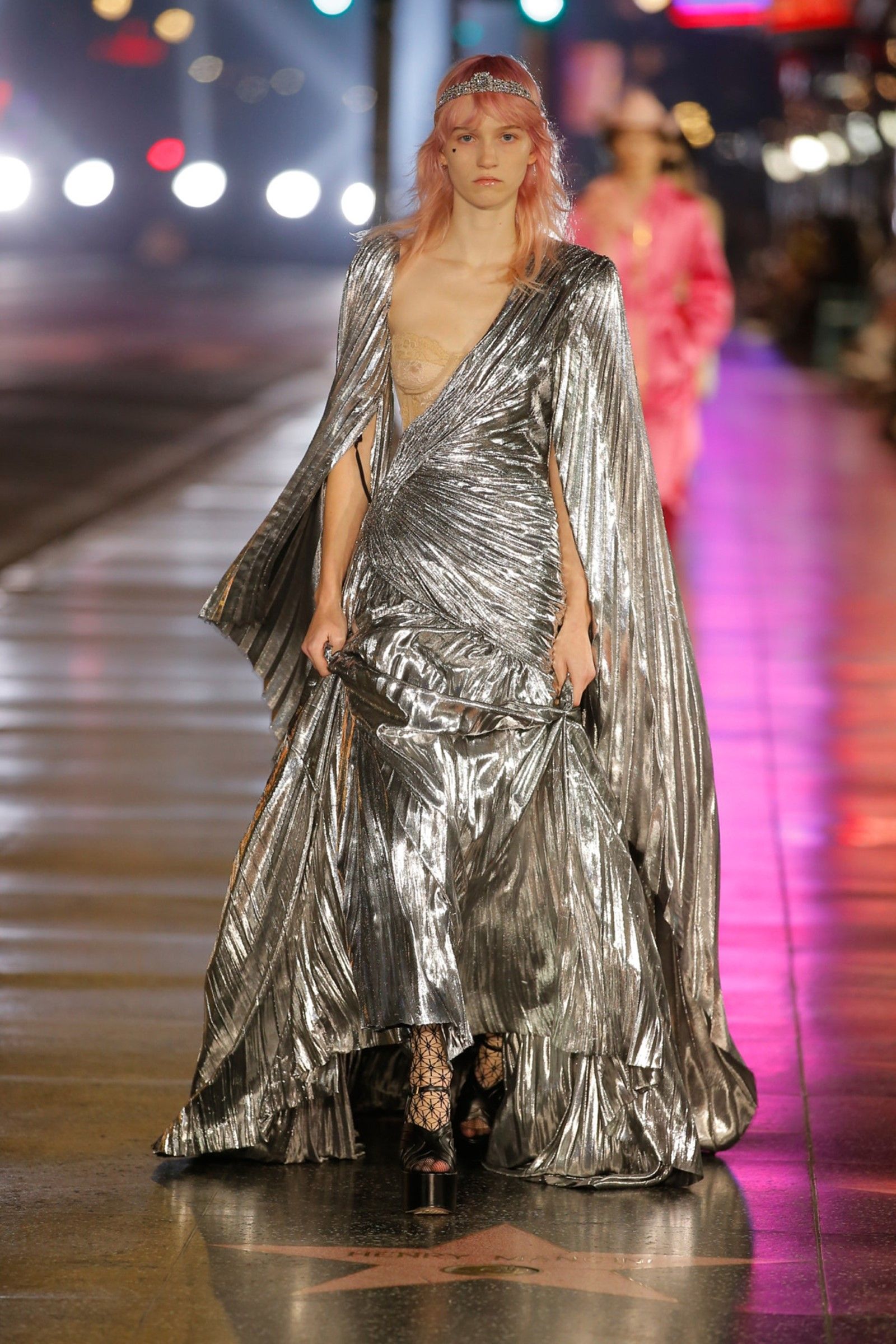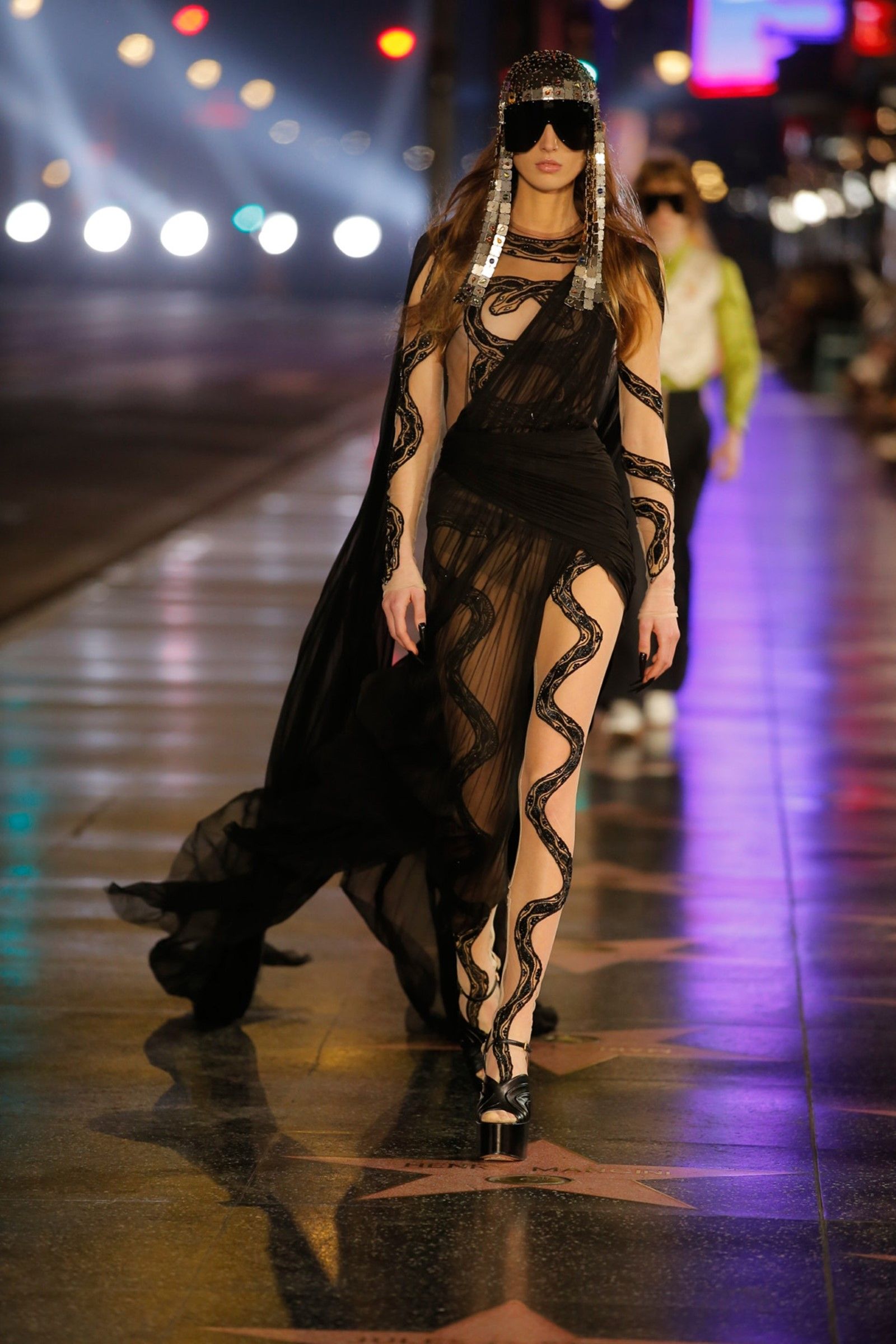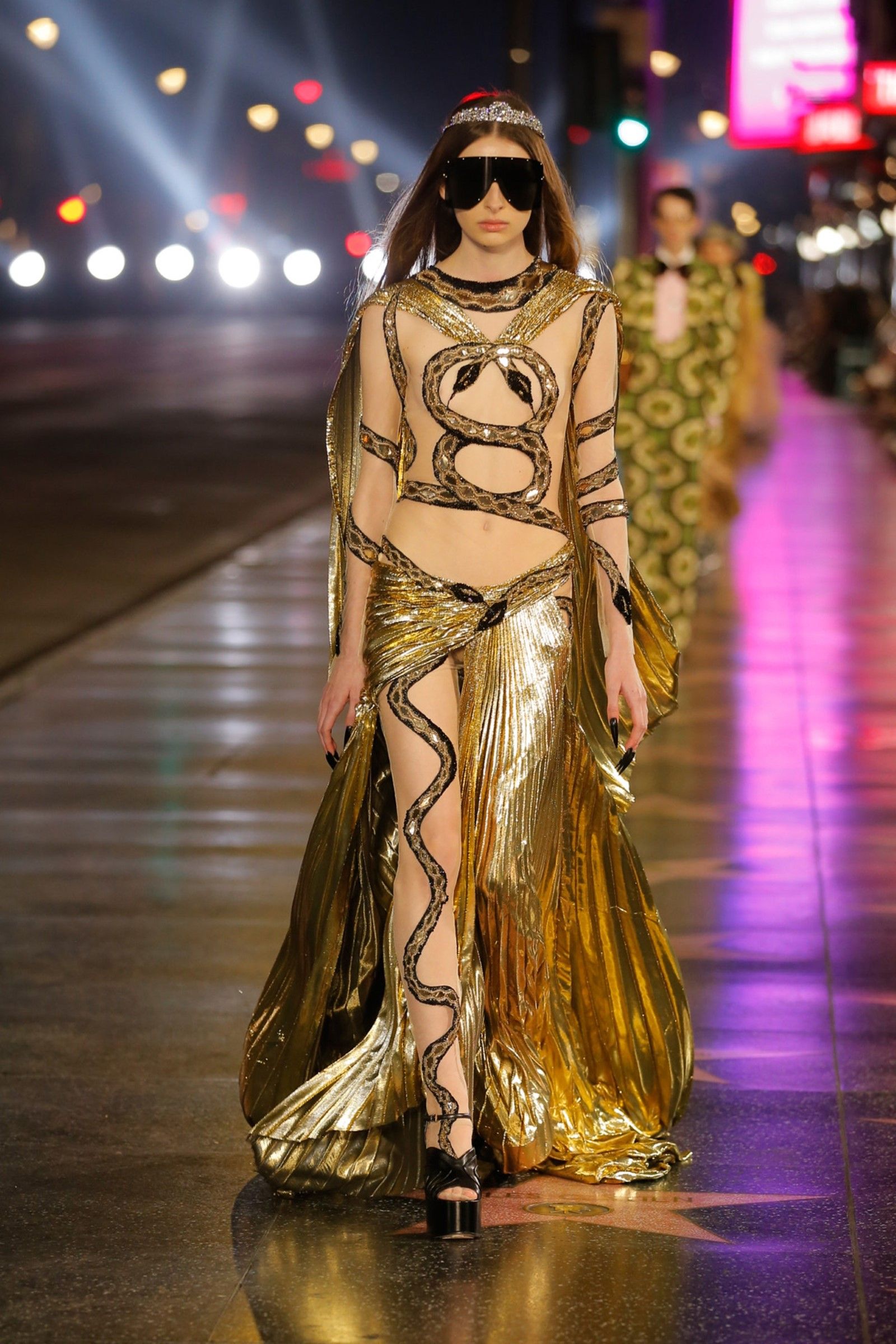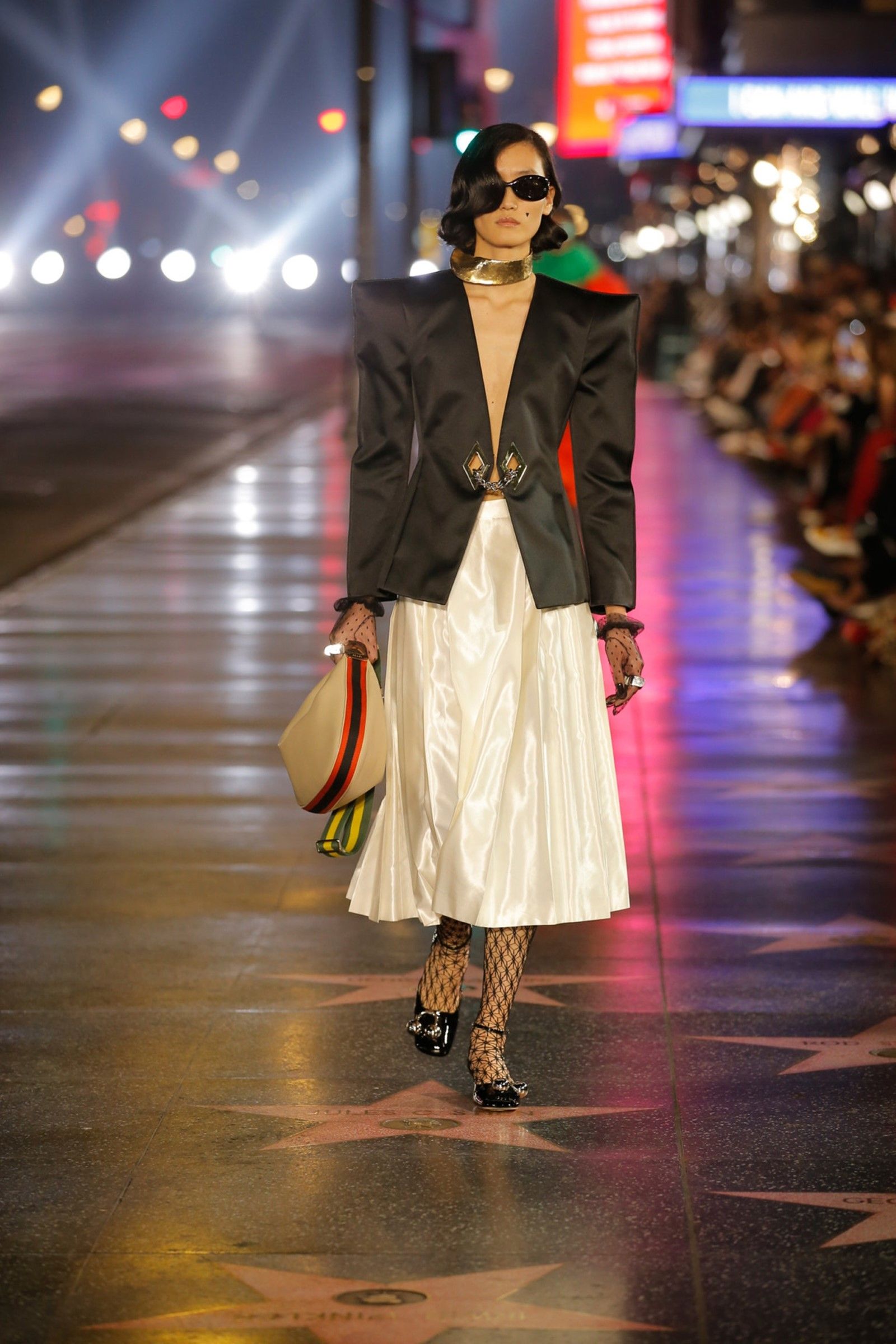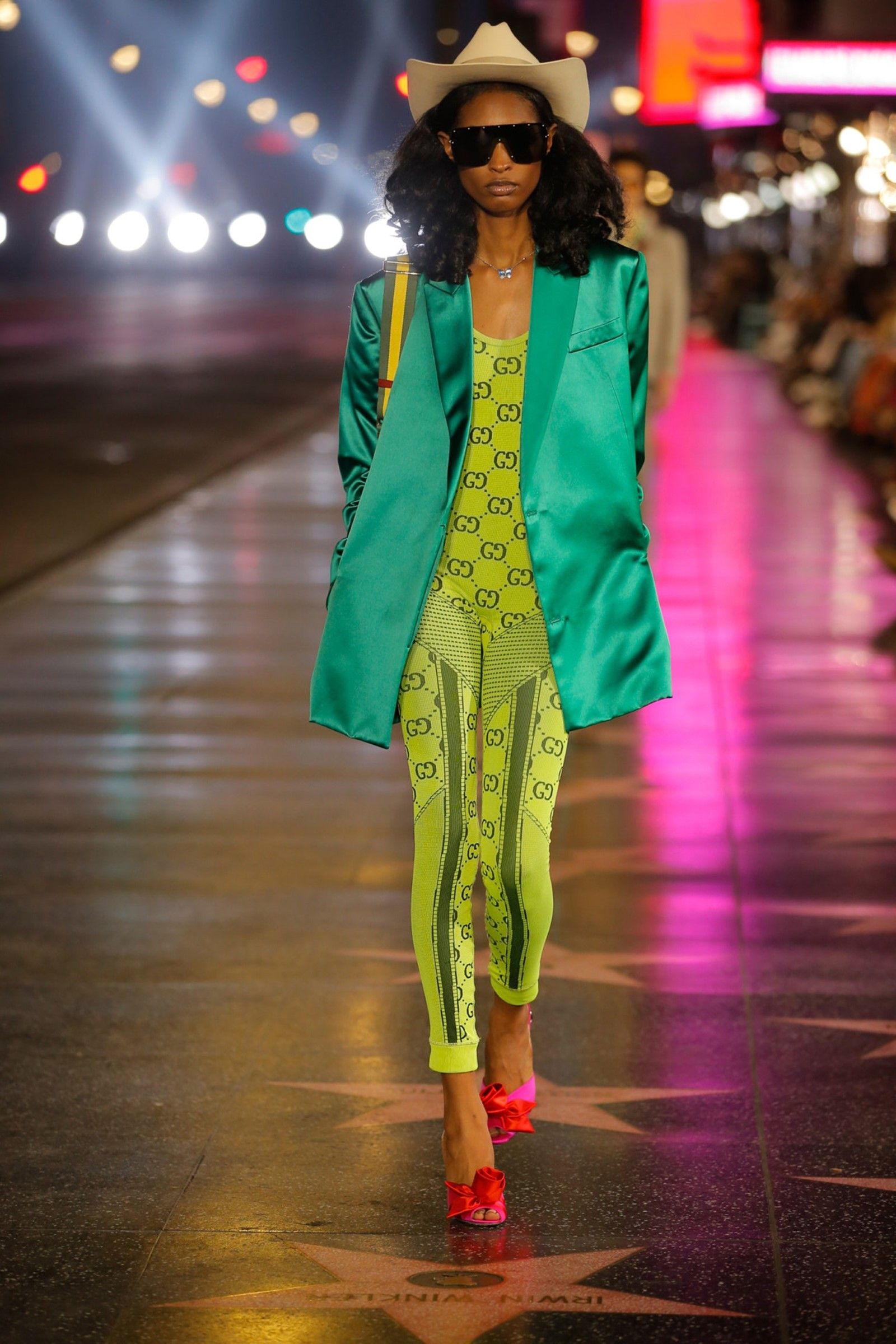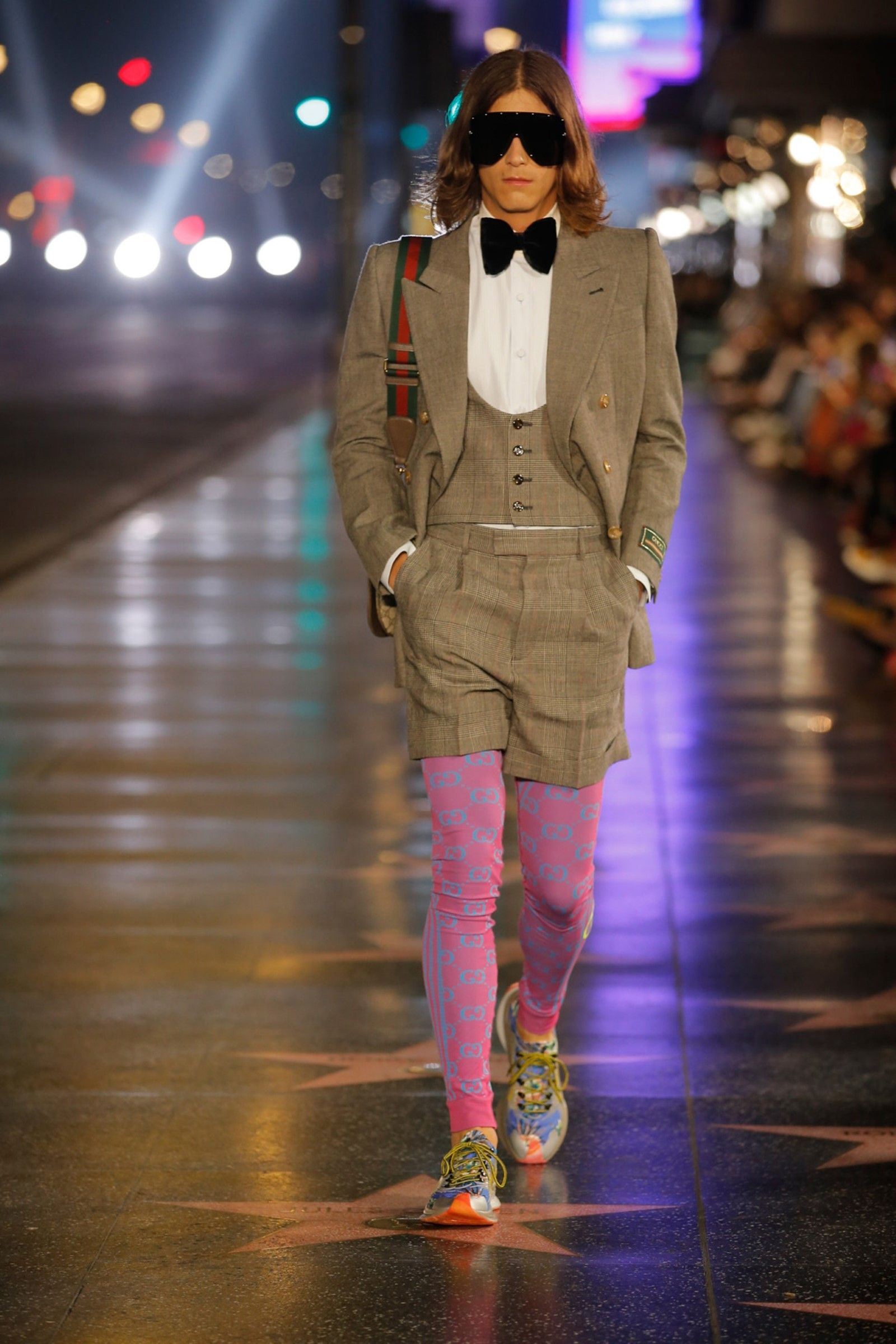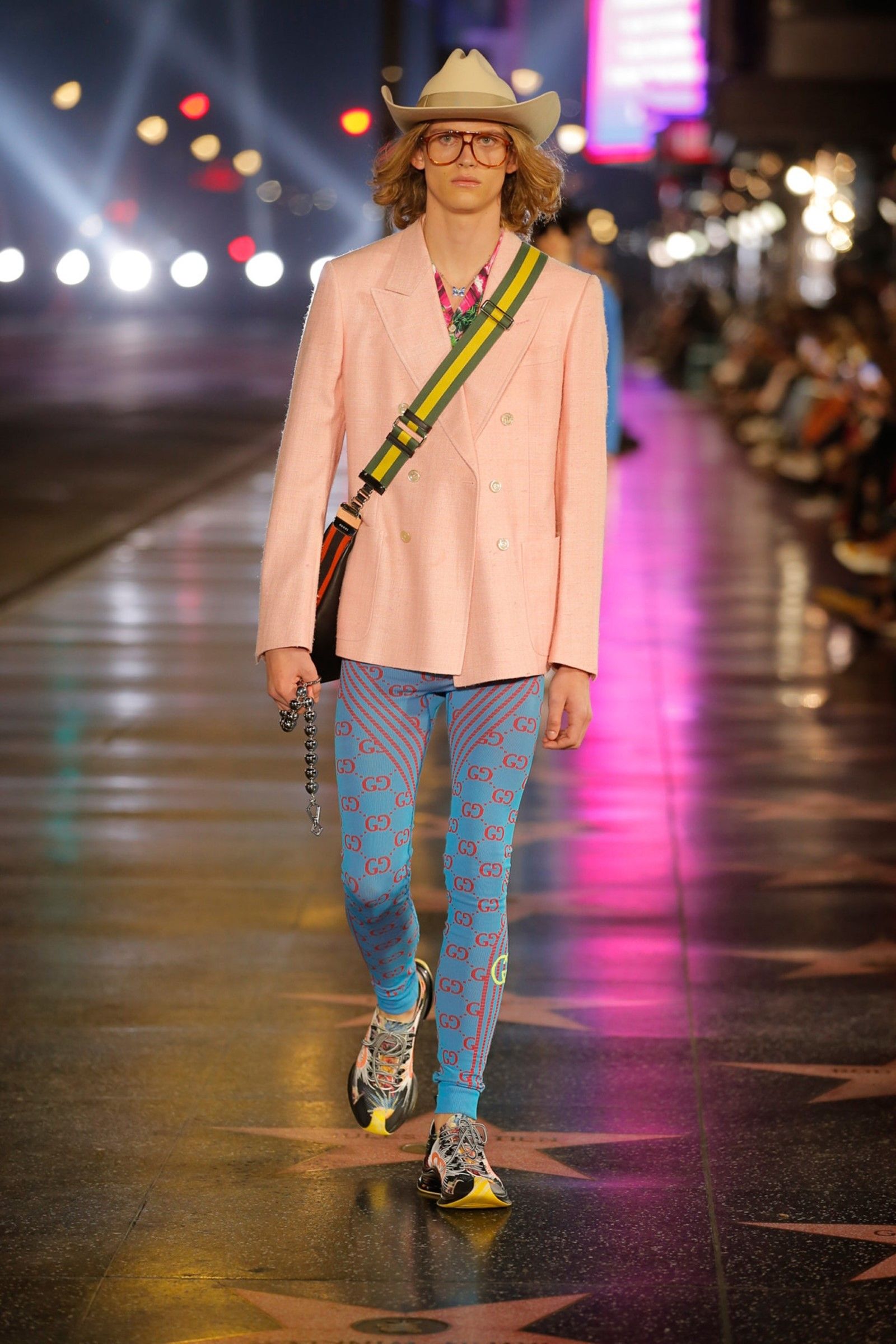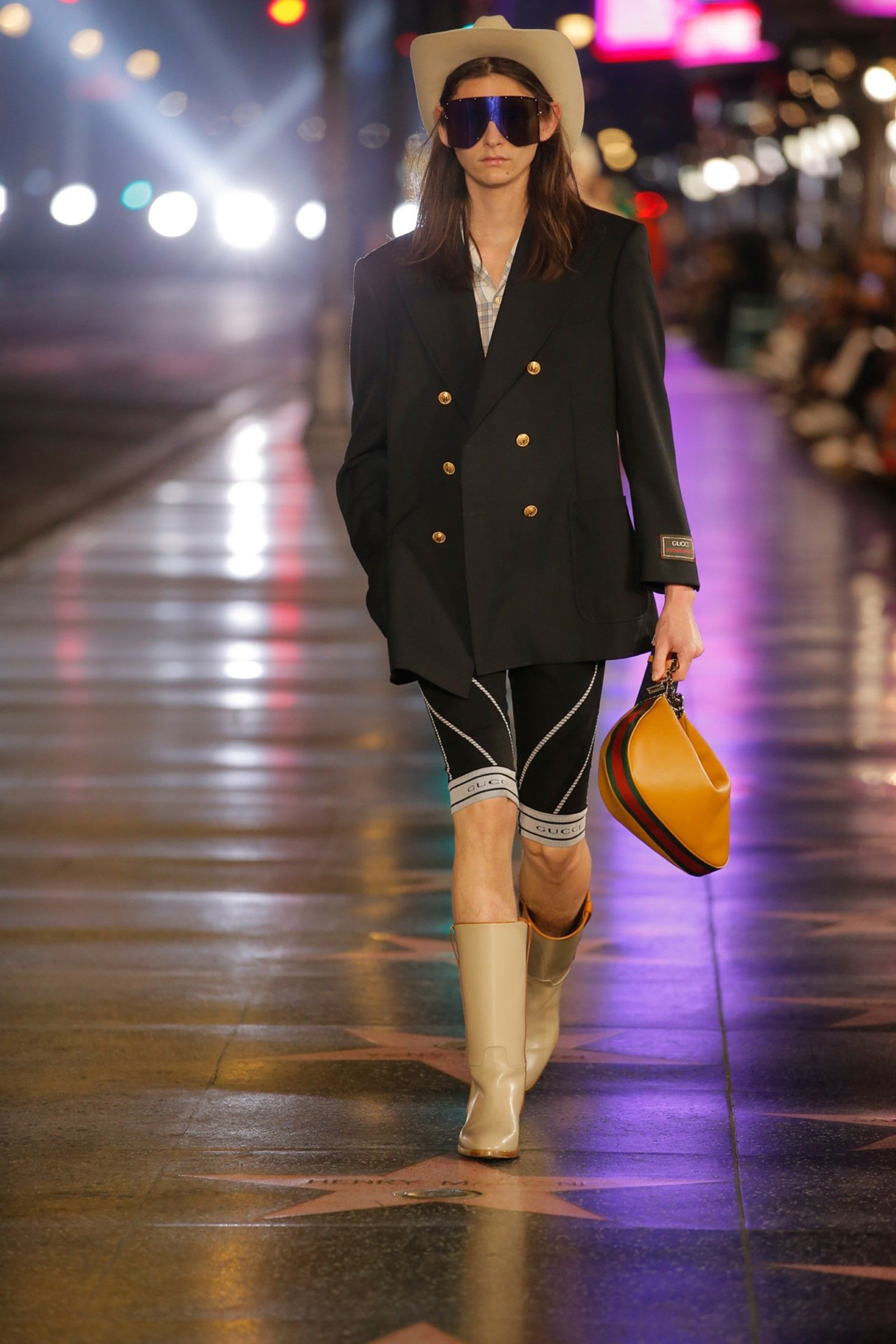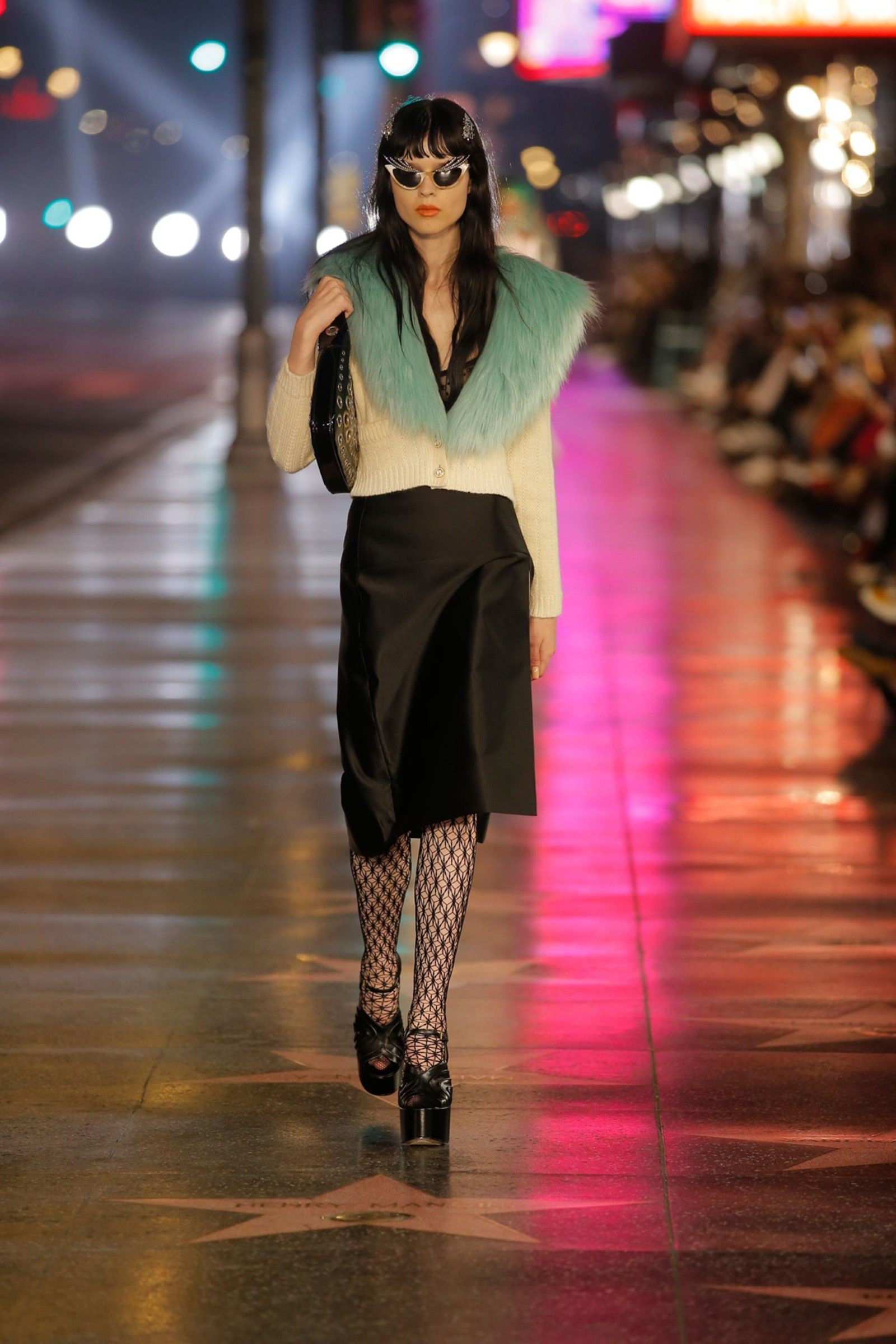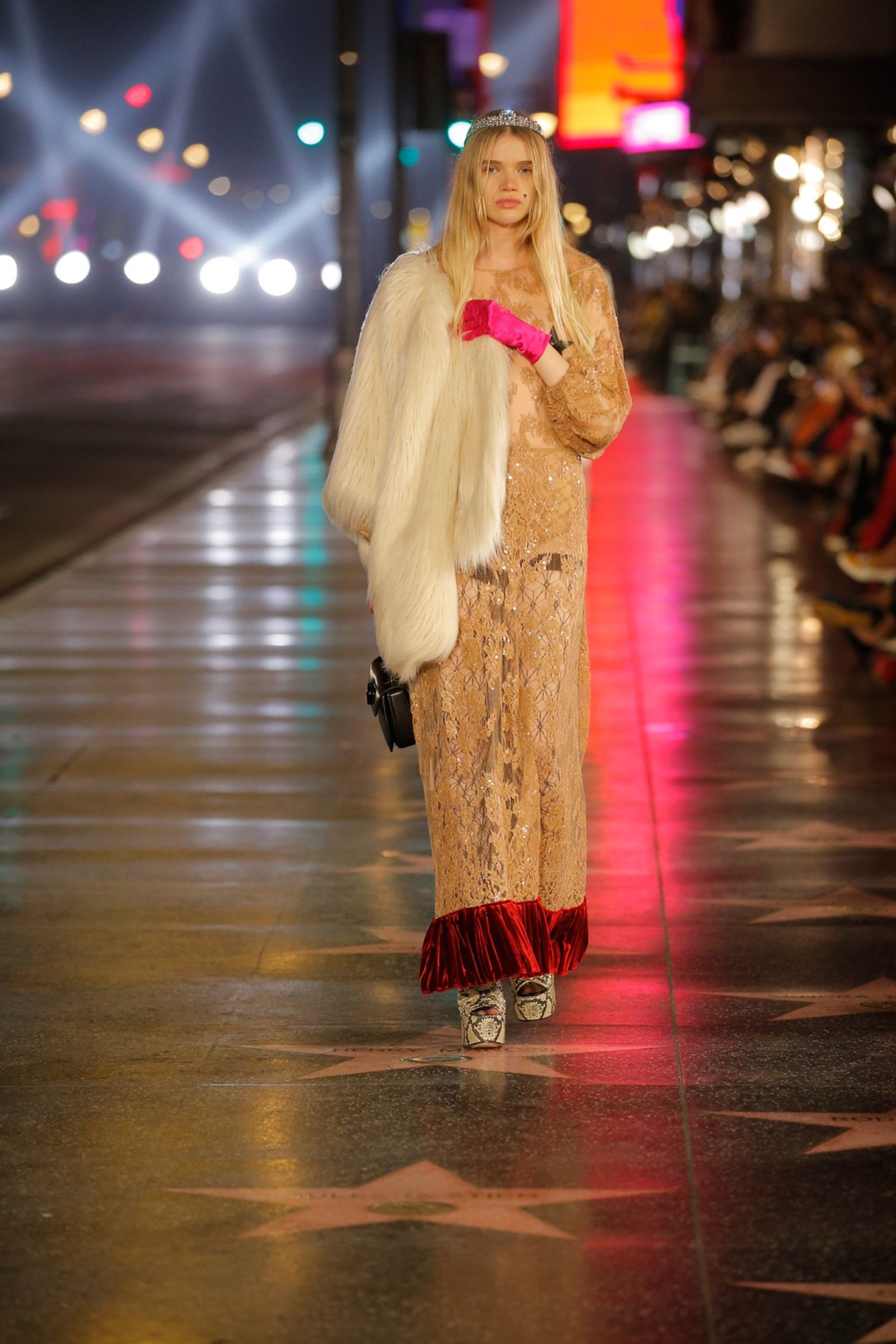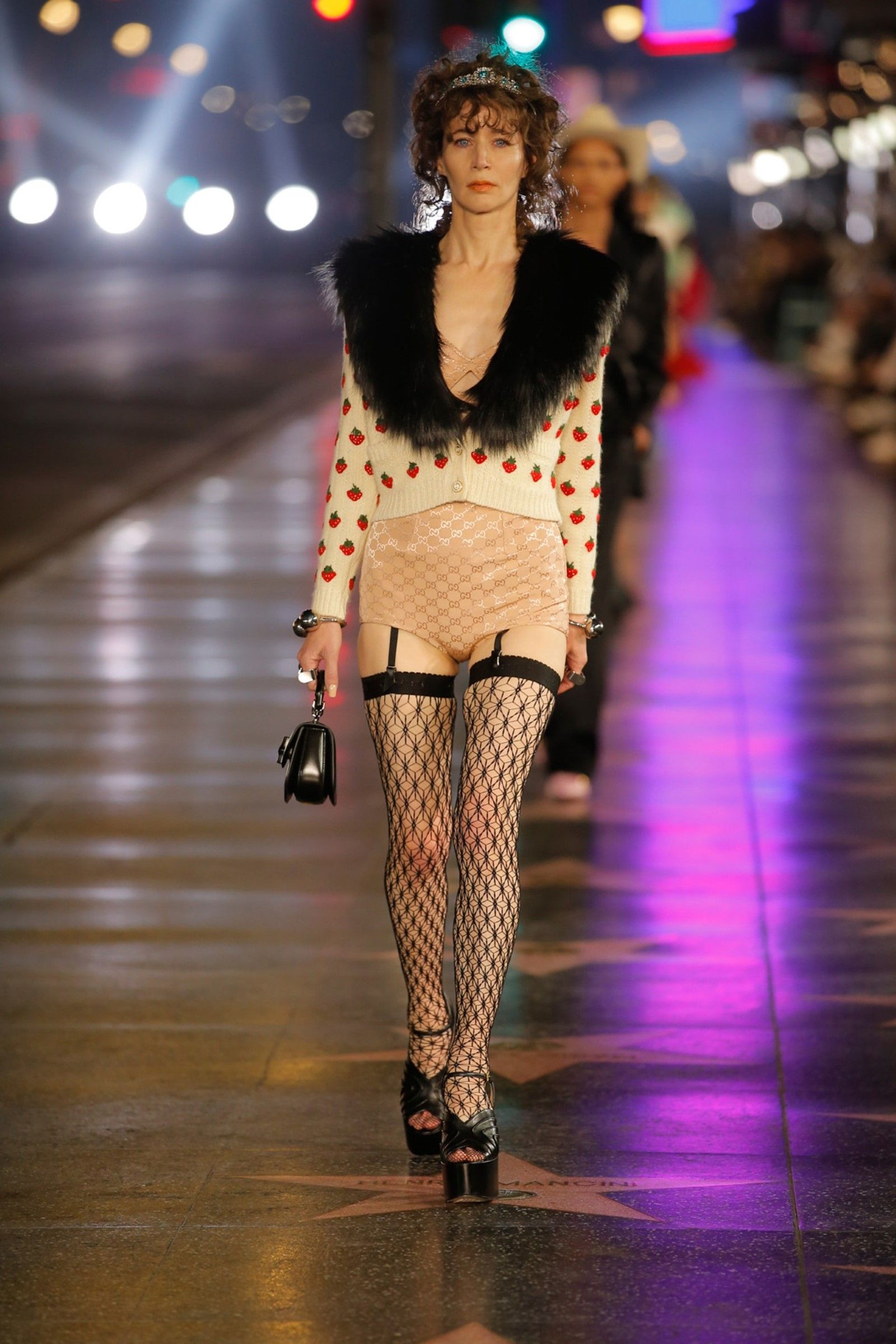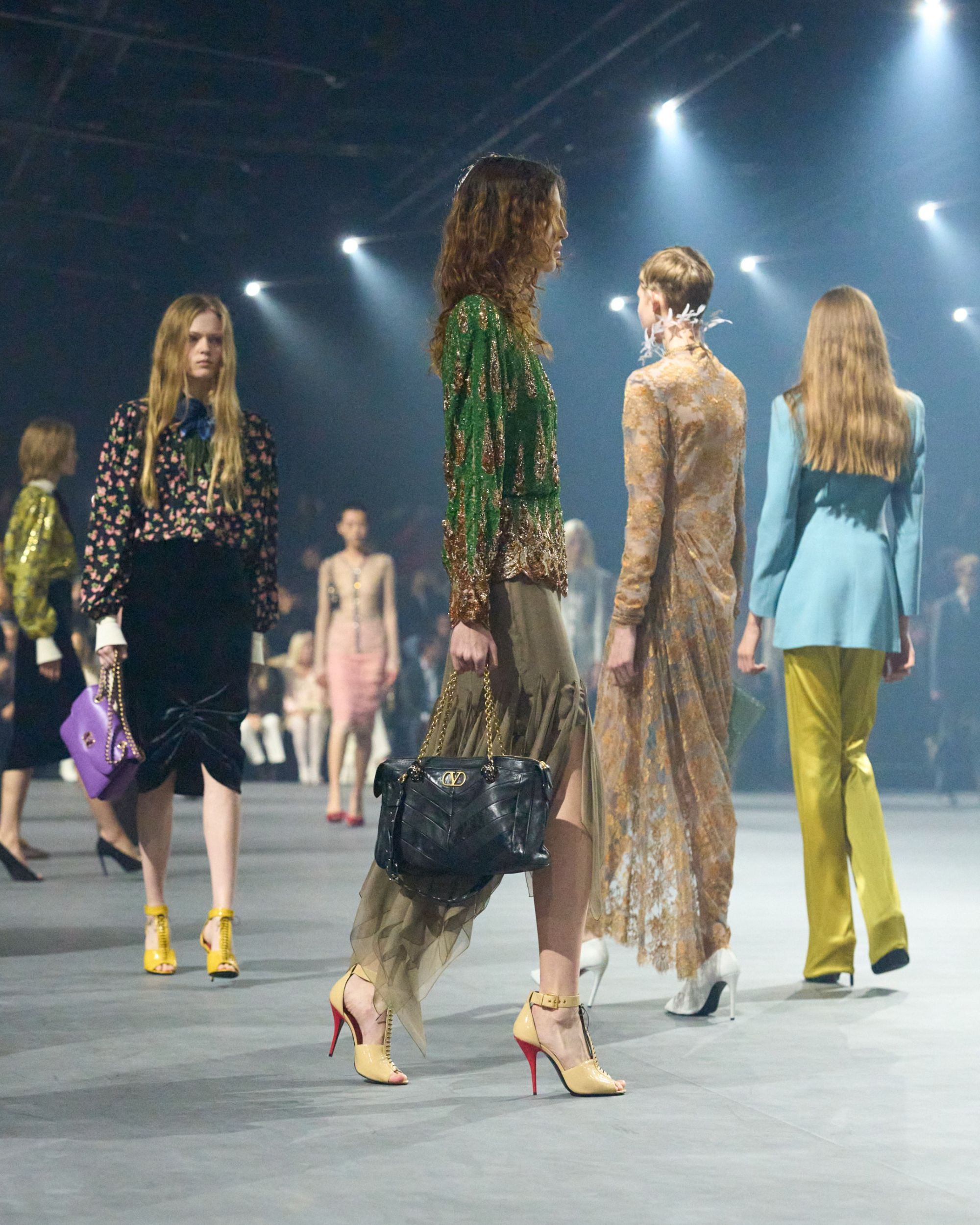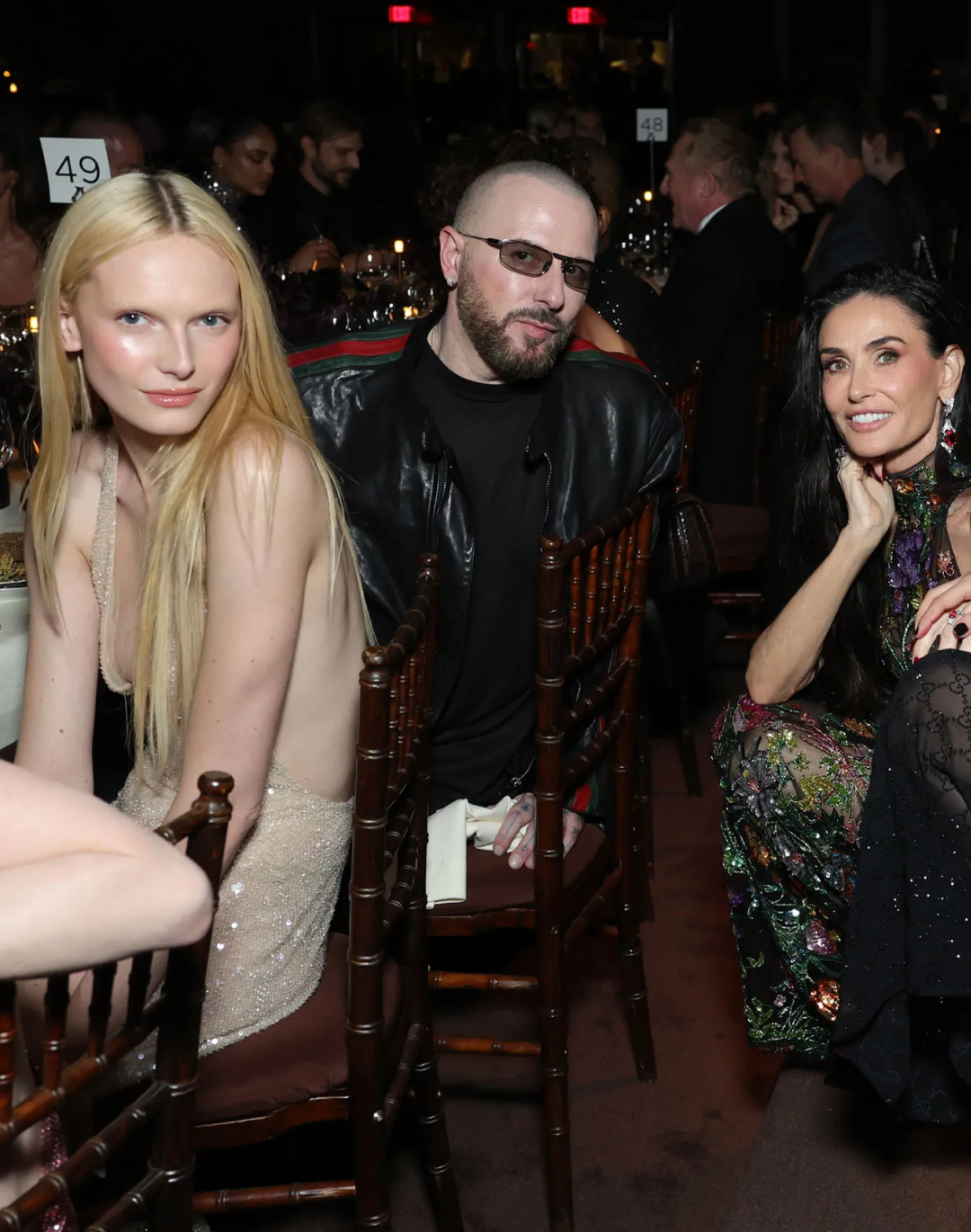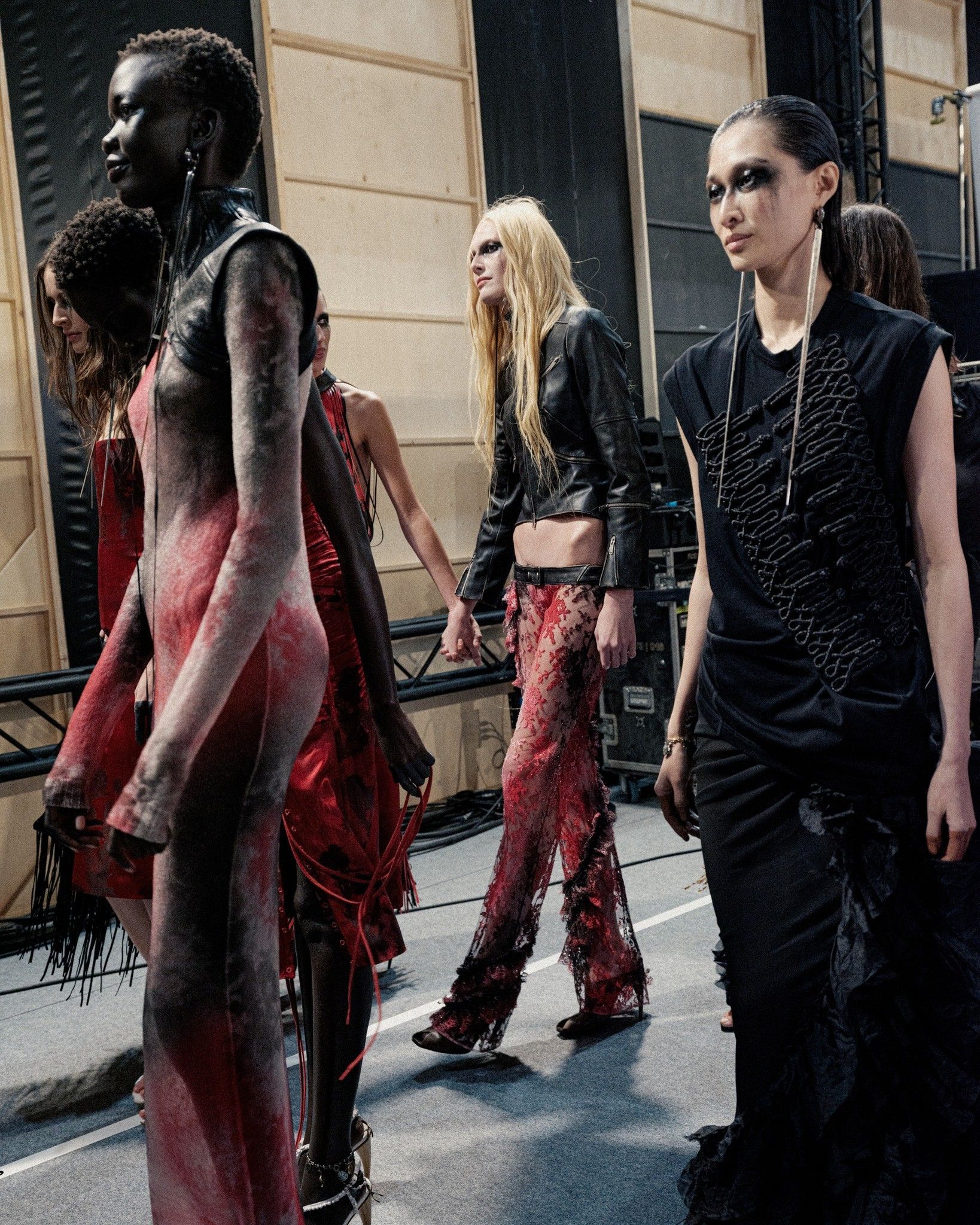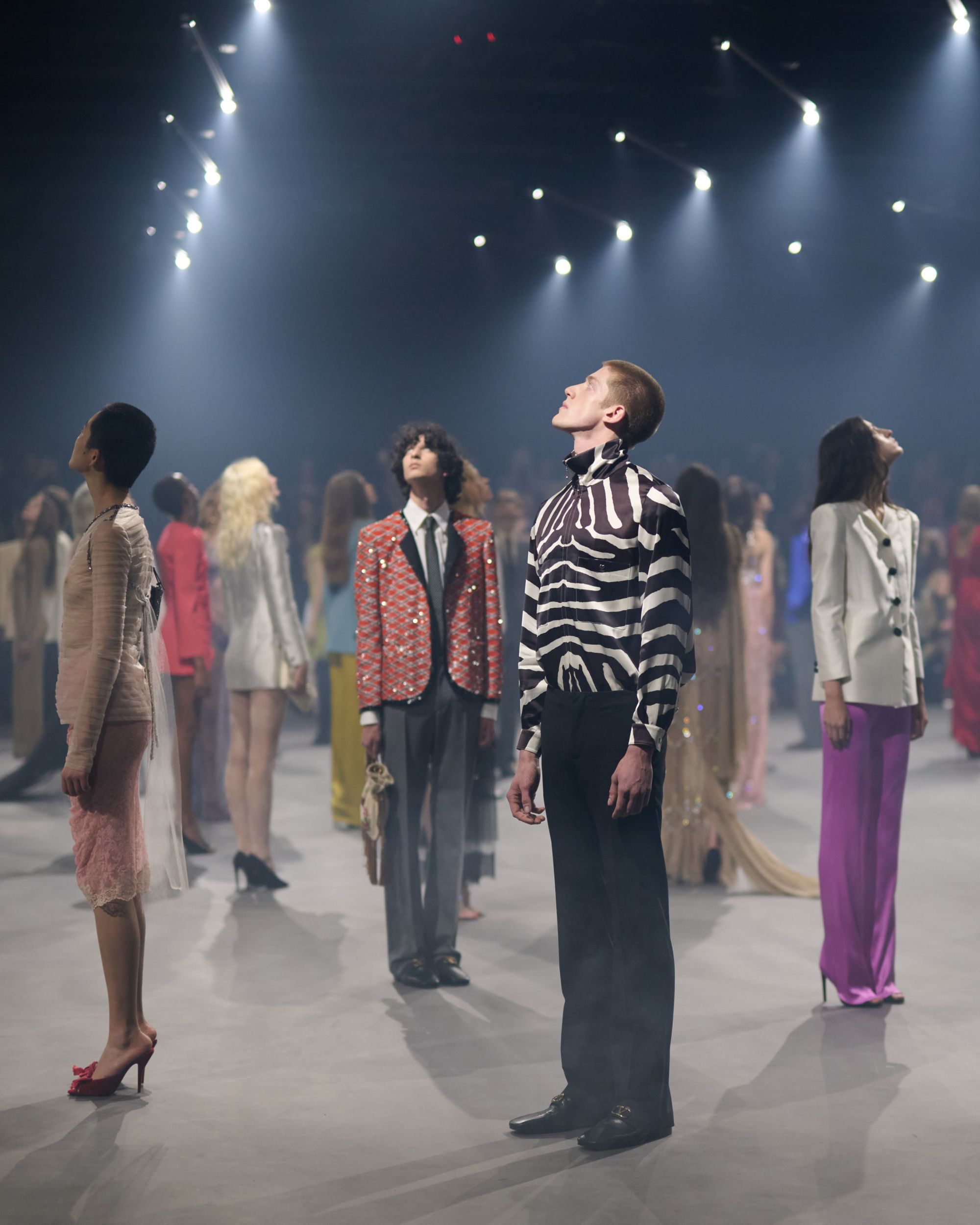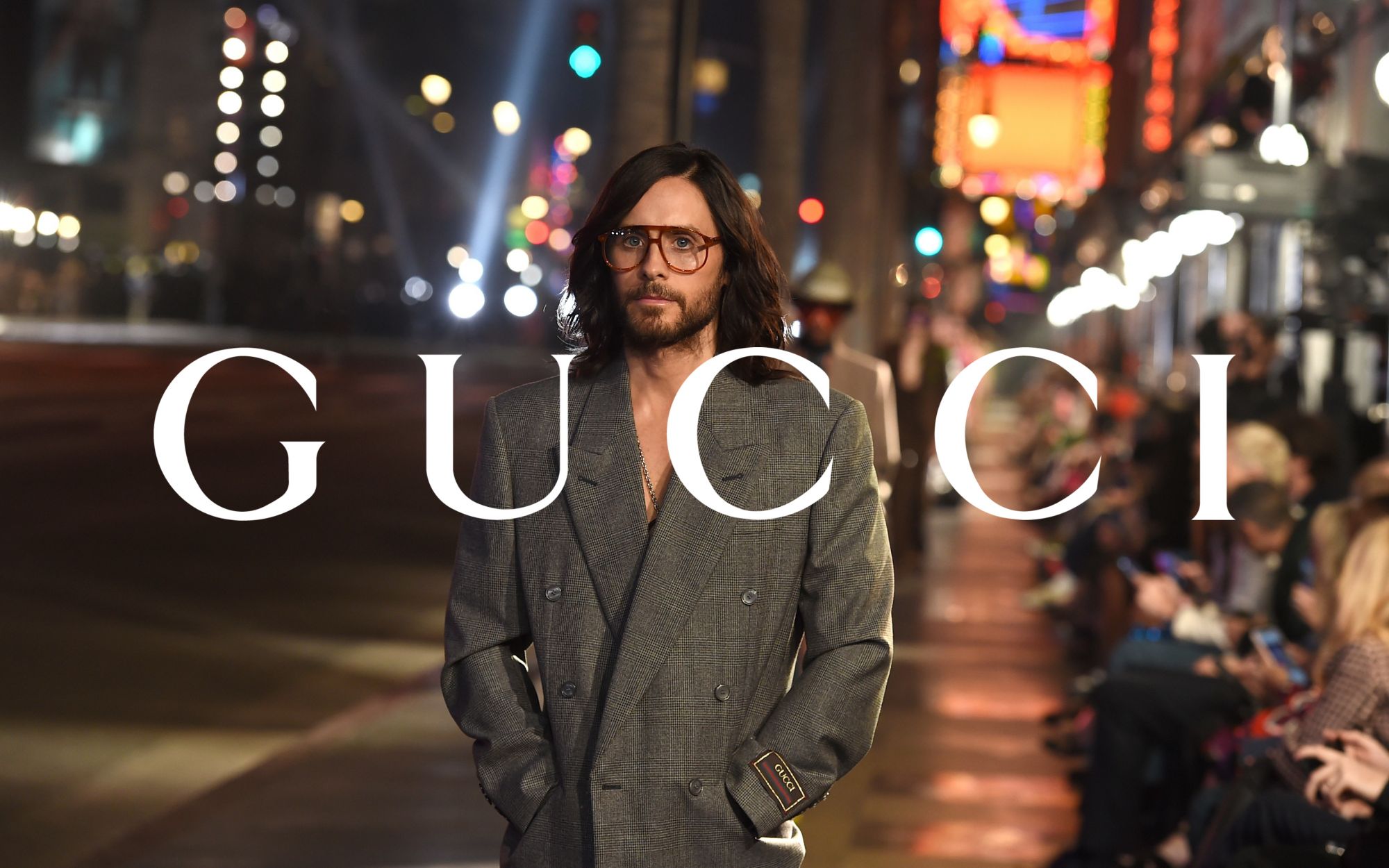
5 things to know about the Gucci show in Los Angeles Alessandro Michele's love letter to the City of Angels
«[Los Angeles] is where I met the most peculiar people, out of time, refractory to any idea of order. […] A parade of enchanted and deeply free beings that go across a land where neither past nor future reside», these are perhaps the most important words of the show notes signed by Alessandro Michele for Gucci's Love Parade show, held tonight on Hollywood Boulevard in Los Angeles. The show was a love letter to Hollywood but, rather than explicitly celebrating the myth of the great stars of the Golden Age as many had predicted, Michele's collection focused on mythologizing the human fauna of the city: starlets and beauty queens, aspiring celebrities, movie stars. A clue to his inspiration were the cowboy hats, the activewear details worn together with the elegant dresses, the sparkling evening skirts, the Hawaiian shirts in full Hunter S. Thompson style – all stylistic features of everyday Hollywood, the one you meet at the Chateau Marmont, in the producers' pools in Beverly Hills, at the bus stops where young actors with big hopes arrive. «My Hollywood is in the streets», explained Michele after the show.
1. Hollywood Sadcore
The term Hollywood Sadcore was used to describe Lana del Rey's music way back in 2012 and refers to slow, tragically etheral music that mixes the glamour of old Hollywood with a sense of melancholy. And in fact in the show there was on the one hand the vibe of the opulent and decadent Hollywood of the 40s, 70s and 90s – that of Sunset Boulevard, that of Boogie Nights but also the nostalgic and hallucinatory one of Lynch films such as Mulholland Drive and Lost Highways. And in fact Gucci is a brand deeply mixed with cinema, its stars, its jet-set. The Hollywood charm of Marilyn Monroe and Veronica Lake, however, mixes with the quietly melodramatic voice of Bjork, creating an airy, nostalgic and bohemian atmosphere.
2. Activewear and the "second skin" trend
Last night's show also consolidated that detail of styling already seen sparsely in some of the main fashion shows this year that sees bodysuits, sweaters and leggings adhere to the body like a second skin and become the basis of a layering made of more sartorial pieces. Prada, Raf Simons and Balenciaga have each conducted similar operations, Fendi will conduct one shortly with its collaboration with Skims – all influences from the boom that activewear has had in the pandemic but which also represent an approach that includes techwear / sports in sartorial styling, a trend that already existed in the 80s with Lady Diana but that in recent years has had a huge pull, just by modern celebrities such as Kim Kardasian and Hailey Bieber.
3. Roaring Twenties' headpieces & Flapper girls
When we think of the '20s we often think of the so-called Flapper Girls: sequined dresses, feather boas, helmet hair and, above all, the jewel-heads commonly called Flapper Headpieces. This type of jewelry became associated with the 20s because that was the era when women began to cut their hair short for the first time and, with the simplification of the wardrobe, jewelry, hats and shoes became the new protagonists of women's outfits. Headpieces also became modern: in response to the huge hats of the post-Victorian era just ended and following the trends of Art Noveau, jewelry such as ferroniéres and tiares were produced and above all hybrid headdresses, made of pearls and crystals, which decorated the hairstyles without leaving them uncovered – a taboo for the time.
4. The reference to Hunter S. Thompson's style
Thompson is not only the writer who invented the concept of gonzo journalism but also one of the most important and neglected style icons of the 70s. Mixing vintage and sportswear pieces, using huge orange aviator glasses, the calculated neglect used in combining trousers with pins with Hawaiian shirts and cowboy hats – all stylistic features that are part of Thompson's eccentric legacy. A writer who, moreover, invented his own unique way of mixing literary genres, becoming a rebel and an iconoclast, but also challenging the idea of what an intellectual could be and above all how an intellectual had to dress.
5. Alessandro Michele and autobiographism in fashion
In his show notes, Alessandro Michele talked about how the origin of his love of cinema was the work of his mother, who worked at Cinecittà in Rome and who told him as a young man about the great myths of Hollywood – making the designer develop a passion for the world of films that led him at a certain point even to think about becoming a costume designer. Things turned out differently. At the same time, the fact that the show notes begin as an autobiographical story points out how, more and more in the latest collections, designers have talked about very personal topics: from Virgil Abloh's sneakers that evoke his passion for Michael Jordan's merch as a young man to Demna who talks about how his love for The Simpsons was born in his childhood, Oliver Rousteing who, on the Balmain catwalk, wears the bandages with which he lived for months after a serious burn, in recent months designers have rediscovered the autobiographical dimension of fashion stortytelling.












































